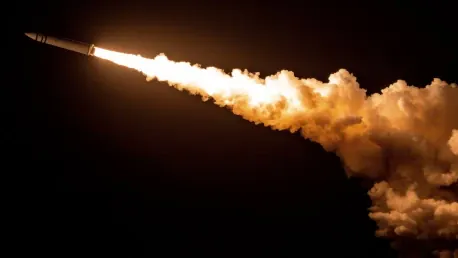Imagine a shield spanning the entire country, designed to intercept and neutralize any incoming ballistic missile, hypersonic weapon, or advanced cruise missile before it can cause harm. This is the ambitious vision behind President Trump’s “Golden Dome” missile defense initiative, a project aimed at providing unprecedented protection for the United States.
A Bold Vision for Unprecedented Protection
President Trump’s administration is pushing for a nationwide missile defense shield, a comprehensive system unlike any other in history. The key question is: can this ambitious project truly safeguard America against modern and emerging threats? This vision represents a groundbreaking ambition for strategic defense coverage, setting the stage for a high-stakes endeavor.
The Stakes: Why Missile Defense Matters Now More Than Ever
The rapid advancement in missile technology by nations such as Russia, China, and North Korea has exponentially increased the risk of long-range missile attacks. Global tensions have escalated, with the world facing a diverse array of threats from peer, near-peer, and rogue adversaries. An effective missile defense system is not just a strategic advantage; it is a necessity. The absence of such a defense leaves the nation vulnerable to catastrophic consequences.
Unveiling the Golden Dome: Concept, Scope, and Goals
The Golden Dome initiative’s primary goals include establishing a multi-layered defense system that integrates space-based interceptors, terminal-phase intercept capabilities, and non-kinetic defenses. This system differs significantly from previous missile defense systems. It also features the deployment of the Hypersonic and Ballistic Tracking Space Sensor layer, designed to detect and neutralize fast-moving threats before they reach American soil.
Navigating Technical and Financial Challenges
Developing this comprehensive shield requires a monumental financial commitment. The estimated cost ranges from $430 billion to $5.3 trillion, with the FY2025 defense budget alone totaling $849.8 billion. The technological hurdles are equally daunting, necessitating cutting-edge research and development to create a reliable defense network. The Pentagon’s strategy to overcome these challenges involves robust investment and innovative solutions.
Insights from Experts: Views and Predictions
Defense experts have offered varying perspectives on the feasibility and potential success of the Golden Dome initiative. Defense Secretary Pete Hegseth and Vice Chief of Space Operations Michael Guetlein emphasize the initiative’s importance, likening it to the Manhattan Project in terms of scale and collaboration. They believe the project’s ambitious goals are achievable with concerted effort and unwavering commitment.
Roadmap to Implementation: Practical Steps and Strategies
The executive order signed by President Trump lays out a timeline with critical milestones to be achieved by March 28, 2025. Budget allocations from FY2025 to 2030 are crucial to support the project’s development. Major defense contractors like Lockheed Martin are pivotal players, tasked with designing and delivering sophisticated components essential for the system’s success.
Building the Future: Applying Lessons from Golden Dome
The successful implementation of the Golden Dome initiative could redefine national security and defense policies. Other nations may look to America’s approach and adopt similar strategies to enhance their missile defense capabilities. Furthermore, the initiative’s broader implications include fostering international collaboration and shaping a global framework for missile defense.
The Golden Dome initiative represents a bold step toward safeguarding the United States against evolving threats. As technological and financial challenges are addressed, the vision of creating an impenetrable defense shield is within reach. The future of national and global security might very well hinge on the successful realization of this groundbreaking project.









